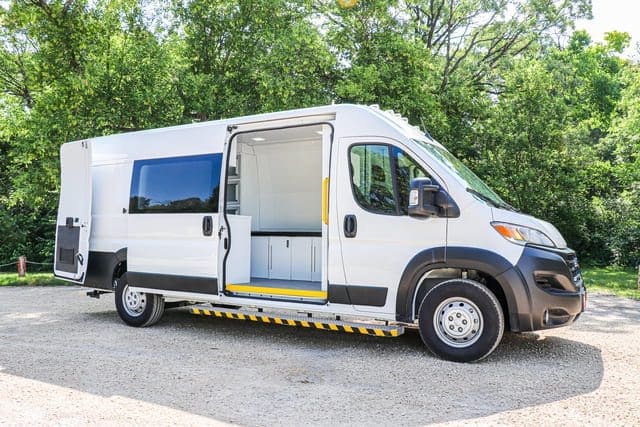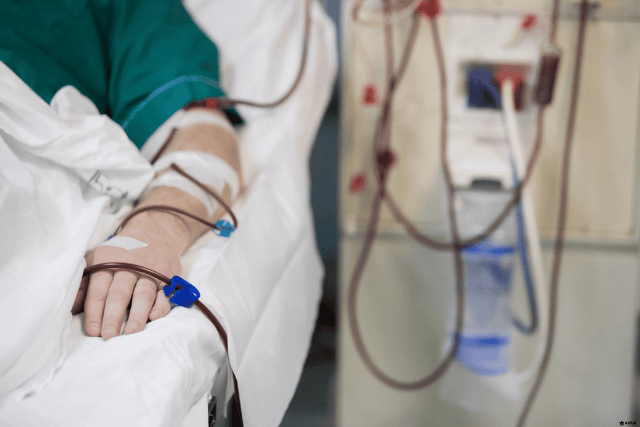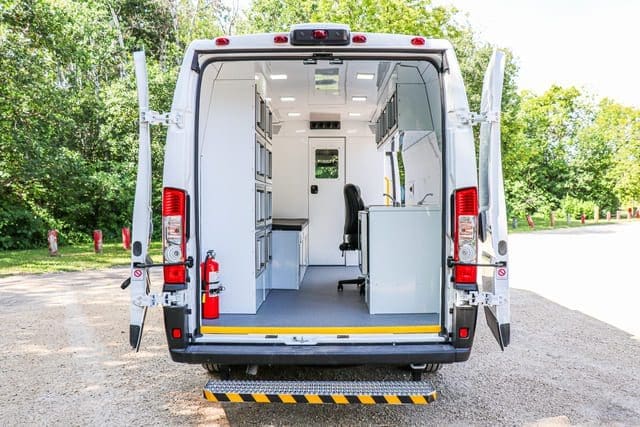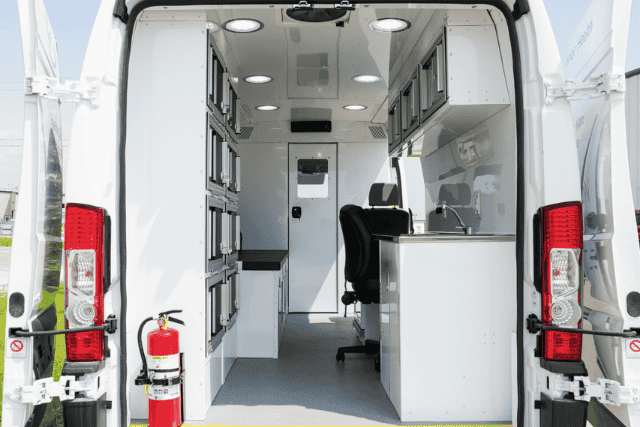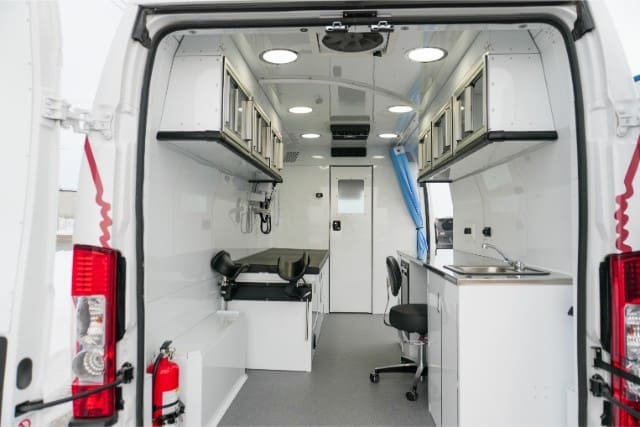Hello there, I’m James, and today I want to share my journey and experiences with you about how mobile medical vehicles, especially those from AVAN Mobility, have impacted the world of telehealth. My journey from the shop floor to accessible healthcare advocacy has given me a unique perspective on the impact of mobile medical vehicles on telehealth.
In this article, we’ll dig deeper into the various aspects of this impact and explore the role that mobile medical vehicles play in shaping the future of telehealth.
My journey working with mobile medical vehicles to sales
I wasn’t always in the business of mobile medical vehicles. In fact, I started my career in the food service and hospitality industry, where the focus was on delivering exceptional customer experiences. From there, I briefly worked in the construction industry, learning about the importance of functional design and keeping things simple.
But it was during a summer job at AVAN Mobility in high school that my path took a significant turn. Little did I know that this was the place where I would eventually discover the fascinating world of mobile medical vehicles.
I spent around 18 months working hands-on, crafting vehicles that I now passionately advocate for. During this time, I witnessed the dedication, craftsmanship, and innovation that goes into each mobile medical van. These vehicles are more than just clinics; they are bridges that connect individuals to the healthcare they desperately need.
What exactly is telehealth?
Between 13% and 17% of American patients used telehealth in 2021.
Telehealth is a way of accessing healthcare services without going to a doctor’s office or a hospital. It uses technology like phones, computers, or tablets to connect people with healthcare providers who can diagnose, treat, or monitor health conditions. For example, patients can use telehealth to:
- Talk to their doctor or nurse about their symptoms, medications, or test results
- Get a prescription or a refill for medicine
- Speak to a therapist or a counselor for mental health
- Check blood pressure, blood sugar, or heart rate with a device that sends the data to the doctor
- Join a group session with other people who have similar health issues
Telehealth can save time and money and help people avoid exposure to germs or viruses. It can also give patients access to specialists who may not be available in their area. However, telehealth isn’t ideal for every situation. Patients may still need to see their doctor in person for specific tests, procedures, or emergencies. Patients should always follow their doctor’s advice on when and how to use telehealth.
What are mobile medical vehicles?
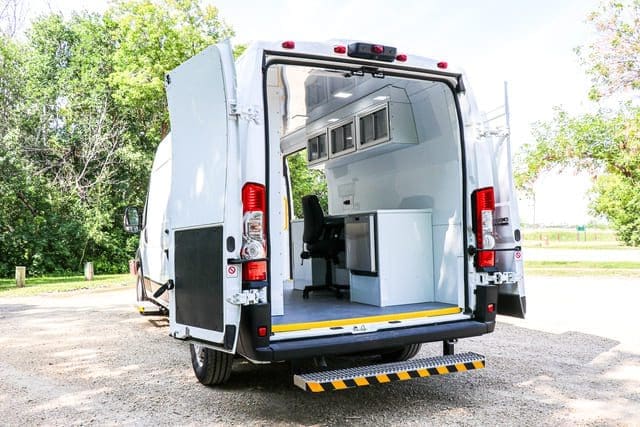
Picture this: You know how ice cream trucks come to certain neighborhoods and communities? Instead of ice cream, it’s a doctor’s office on wheels. That’s a mobile medical vehicle!
These vehicles are specially designed to bring healthcare to places that don’t have a nearby hospital or clinic, or to populations that would otherwise struggle to access healthcare. So, if people live in a rural area, don’t have a vehicle, or maybe there’s a disaster that makes it hard to get to a doctor, these mobile medical vehicles can come to the rescue.
Inside, they have many of the things a basic doctor’s office has. They have a patient bed, options for a sink and a fridge, floor-to-ceiling cabinetry, and medical equipment that you can customize into the van.
At AVAN Mobility, we’ve got four different types of mobile medical vehicles, and each one does a special job:
Mobile Clinic Van: Mobile Clinic Vans are for people who can’t easily get to a clinic. Instead, the clinic comes to them. It’s a way to make sure everyone, even in remote areas, can see a doctor.
Mobile Outreach Van: This van does more than just drive around. It helps with things like counseling, housing, and healthcare. It’s like a combination of a taxi and a clinic. It takes people where they need to go and helps with their health too.
Mobile Response Van: This van is for not-so-urgent medical needs. It’s not an ambulance, so it’s not for life-threatening situations. But it can be used as an urgent care clinic until ambulances arrive.
Mobile Mitigation Van: These vans are all about safety. They provide a private and sterile space for things like supervised consumption and harm reduction. It’s a place where people can get help with substance abuse and stay safe.
How mobile medical vehicles bring the human connection
In our fast-paced, technology-driven world, it’s easy to get caught up in the idea that everything can be accomplished through screens and virtual interactions. Telehealth, with its promise of remote medical consultations and healthcare services delivered through digital means, is undoubtedly a game-changer. However, in our pursuit of convenience, it’s important not to forget the fundamental element of healthcare: the human connection.
As someone who’s witnessed the journey of mobile medical vehicles from concept to implementation, I’ve seen how they bridge the gap between patients and healthcare providers. In doing so, they nurture the vital human connection that is often taken for granted in the age of telehealth.
Each mobile medical van I witnessed being built had a singular purpose: to bring healthcare to people where they are, connecting them with medical professionals in person. It’s more than just a means of transportation; it’s a lifeline that delivers care to those who need it most.
The balance of mobile medical vehicles and telehealth
Telehealth is undoubtedly transformative and allows for convenient access to medical care, especially when physical visits are challenging. But the magic happens when telehealth and mobile medical vehicles come together.
Mobile medical vehicles are a connection to real healthcare professionals. This is especially true for those who cannot easily access virtual healthcare. Not everyone has a stable internet connection, and some people don’t know how to use the required technology to make telehealth happen.
In telehealth, the human touch doesn’t disappear; it adapts. Patients can have consultations with healthcare providers through video calls and then receive follow-up care in person, courtesy of mobile medical vehicles. This harmonious blend of technology and personal interaction ensures that telehealth remains patient-centered and supportive.
A real look at how mobile medical vehicles bridge the gap
Let’s take a look at a real-life example of how the Community Clinic of Southwest Missouri used a mobile medical van to bridge the gap in healthcare.
- In 2011, a tornado devastated infrastructure and medical facilities in Joplin.
- There was a loss of 162 lives and a negative impact on healthcare accessibility.
- The Community Clinic of Southwest Missouri was founded 30 years ago by Stephanie Brady to provide healthcare to the uninsured.
- It provided immediate care after the tornado, filling gaps in medical services.
- It aided in community rebuilding and focused on uninsured individuals.
- The clinic then started to focus on a transition to mobile healthcare after they recognized a need for a mobile clinic in rural areas.
- It acquired a mobile medical unit through a partnership with the city of Joplin and AVAN Mobility.
- It reaches rural communities lacking access to medical care.
- The mobile clinic offers primary care, vaccinations, and essential resources.
Shaping a compassionate and accessible future in healthcare
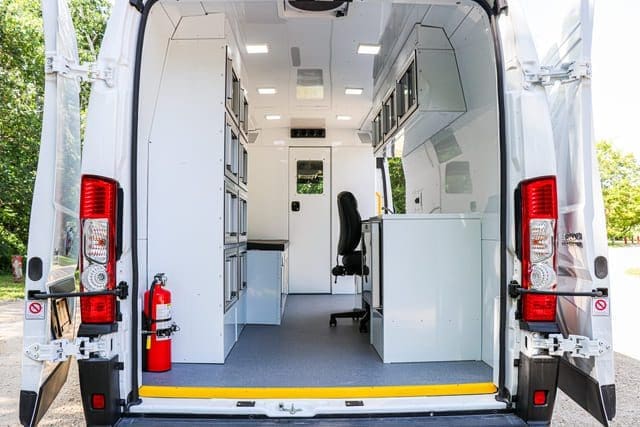
In wrapping up our journey through the world of mobile medical vehicles and their impact on telehealth, it’s clear that the human connection remains at the heart of healthcare. As someone who’s seen these vehicles crafted from the ground up, I can testify to their role as bridges that link individuals to vital healthcare services. They ensure no one is left without access to quality care.
Telehealth has the promise of remote medical consultations and digital healthcare delivery, but in our quest for convenience, it’s important not to overlook the core element of healthcare: the human touch.
The beauty happens when telehealth and mobile medical vehicles join forces. These vehicles are more than transportation; they’re the lifelines that bring care to those in need. Patients can now have consultations through video calls and receive follow-up care in person, thanks to mobile medical vehicles. This synergy guarantees that telehealth remains patient-centered and supportive, while the human connection thrives.
On that note, I’ll leave you with some homework. Read through our article on the top 5 ways a mobile clinic vehicles improve medical accessibility.
If you have any questions about our mobile medical vehicles, I’d love to chat. Feel free to click the button below to reach out.
